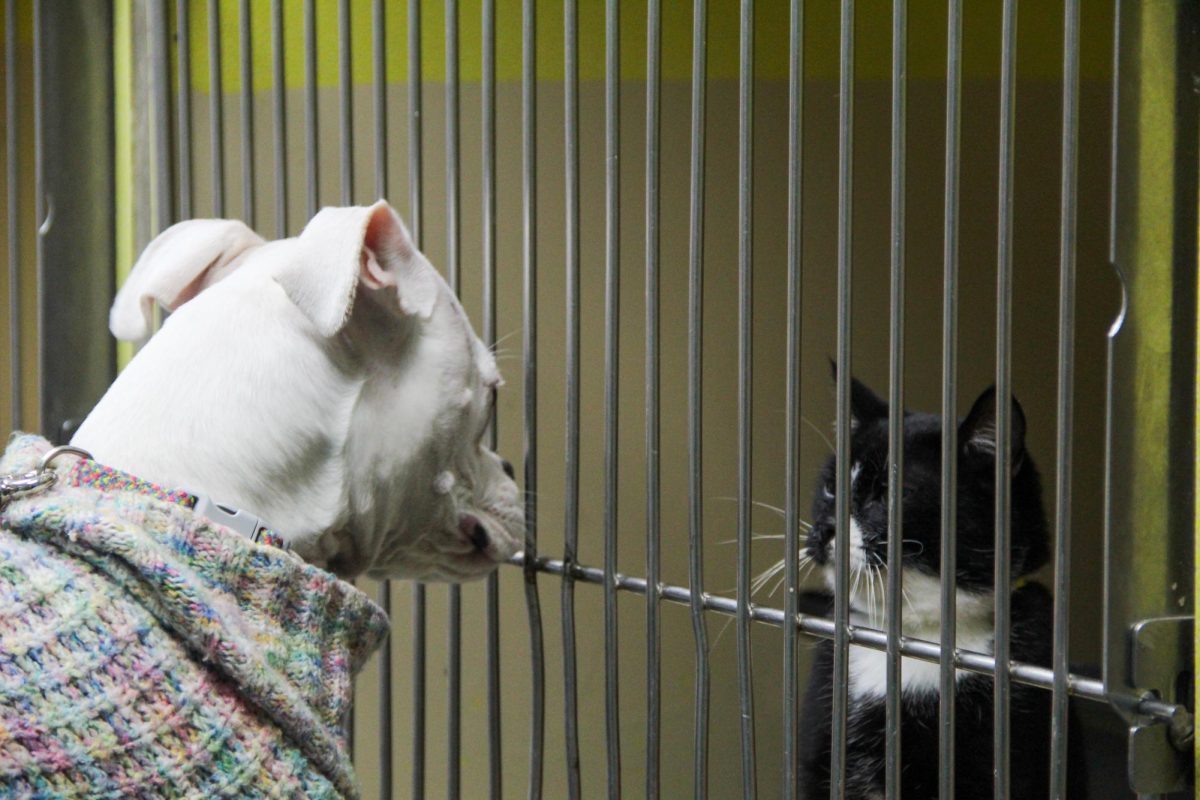Imagine, if you will, waking up every day confined within the same four walls with no way to get out and explore. Nothing to keep you busy and preoccupied. You’re given the same food every day and are forced to drink from stale water with food particles floating in it. This is the reality of many animals in captivity whose owners bought them on a whim without doing the proper research on those animals’ needs.
Shelters see a surge in unwanted pets this time of year, as those given as “gifts” for the holidays end up being more work than anticipated.
One of the biggest contributors to animals being put into homes that aren’t ready to properly care for them are pet stores. Many people who enter pet stores see the animals in their small temporary environments and decide to impulse buy the animal without properly educating themselves on what the animal will need in an environment long term.
Advertisement
McKenna Scaff, the lead of pet care at PetSmart in Peoria, Illinois, said that lots of people buy animals for their children as a sort of toy. A popular choice for children would be the hamsters, who are actually nocturnal and don’t enjoy small cages riddled with tubes. A better environment is a large tub with plenty of bedding to burrow in.
Many exotic pets are then returned to the store within their 14-day policy, either because they weren’t what the owner was expecting or they’re on their deathbed due to improper care. This is especially the case with reptiles.
“Do your research before bringing home any living being. It is a soul who feels pain and suffering. Ignorance is such a sorry excuse for not taking proper care of your pets,” Scaff said.
Pet stores also get a lot of their animals from mills. Animal mill breeding can lead to a lot of genetic illnesses, as well as behavioral issues. For example, many pet mice sold at chain pet stores are a lot more skittish and anxious than a well-bred pet mouse would be. A well-bred mouse is more calm and mentally developed, as well as more used to the scent of humans than a mouse coming from a mill would be.
While these animal mills are still being used by large chain pet stores, Illinois has banned the sale of puppies from puppy mills in stores. Advocates say that this is a step in the right direction, although many puppies still end up in shelters through accidental and “backyard” breeding.
Shelters do all that they can to care for unwanted cats and dogs in order to hopefully find them a new home. What a lot of people don’t realize is that different types of cats and dogs require different kinds of care and environment. And there are always more animals that need homes than there are people who are able to take them in.
A lot of people go for size and appearance when looking to take in a new cat or dog. With that comes different levels of coat care, environmental concerns, diet and exercise needs. A large dog with a fluffy coat of fur is going to require a lot more time and attention than a small, short haired dog. For example, a popular breed of dog is a husky, but their coat requires a lot of regular maintenance, and their energy levels are a lot higher than new owners are generally prepared for.
Advertisement*
According to a report on dog ownership in the National Library of Medicine by Katerina Holland, only 40 percent of dog owners do any prior research within a week before taking home a new dog, and one fifth of dog owners don’t do any prior research at all.
Jupiter Thompson, a kennel technician at the Humane Society of Southern Illinois, gave her take on some major reasons that people surrender their animals.
“It’s usually just people not realizing the amount of commitment that comes with taking care of an animal, it’s like a 15-to-20 year commitment, not just a 2-to-3 year thing. And we have people who’ve had their animals for a couple months to a couple years before surrendering an animal.”
Thompson also says that around graduation time in the spring is another period shelters see an influx of animals being surrendered. When people are graduating college and moving away for potential jobs, they realize that they are no longer able to keep their pet.
Another issue around this time would be breeding season, according to Thompson. It’s a major reason why shelters and veterinarians push to get your dogs and cats spayed and neutered, because if they get out and make babies, many of those babies end up unwanted and in the shelter within the first few years of their lives.
According to the American Society for the Prevention of Cruelty to Animals (ASPCA), approximately 6.3 million companion animals are surrendered to a shelter each year. About 3.1 million are dogs and 3.2 million are cats, although the number of surrendered animals has declined by almost one million since 2011.
Still, about 920,000 shelter animals are euthanized every year. While a large number of unwanted animals are still entering the shelter system, the number of euthanasia cases has decreased by about 2.6 million since 2011.
The ASPCA says this decline could be due to an increase in animals being adopted and strays being reunited with their owners. Another factor could be an increase in pet ownership knowledge and an increase in spays and neuters. With the general public becoming more aware of the issue with unwanted animals, it’s creating a larger call to action in preventing unwanted animals from being born or otherwise brought into homes that can’t care for them.
Sometimes it’s in a person’s best interest to buy a purebred dog rather than adopting one. This could be due to a person’s individual health needs or other considerations. When looking into a purebred dog, rather than looking at stores or mills, it’s best to do local research on reputable breeders around the area. Many reputable breeders put a lot of time and money into their puppies and keep them up to date on vet appointments and vaccines. They animals aren’t mass produced and are very well taken care of, and many reputable breeders make sure that their puppies are going to a knowledgeable home.
SIU student Annabell Watkins said that while she personally never owned an animal without doing previous research on their care, her younger brother got a bearded dragon that eventually became hers when he was unable to properly care for it.
Fellow student Gayla Orrill confided that she was gifted a bunny when she was younger with no knowledge on its needs or how to care for it, and then did the same thing again in 2016 where she spontaneously bought a bunny without being ready to care for it.
Watkins said that all of her cats and dogs, except for her great Pyrenees, had been rescued from the park by her home. It’s a popular place to dump animals, but Watkins feels that it’s inhumane to dump animals outside.
“I feel that if [the original owners] can’t care for them, they should at least drop them off at the shelter rather than outside.”
Watkins also feels that cats and dogs as strays, running around outside, largely impacts the ecosystem. She says that it’s mainly a human issue and believes that people should get their animals fixed to avoid unwanted animals being dumped or ending up in shelters.
Orrill believes that dumping animals, leading to stray animals, can negatively impact the ecosystem as well.
“It’s bad, like the reptiles in Florida can be dangerous, like all the snakes and everything. And all the cats can really negatively impact an ecosystem. So, I think people should spay and neuter pets and not dump them.”
Advertisement









